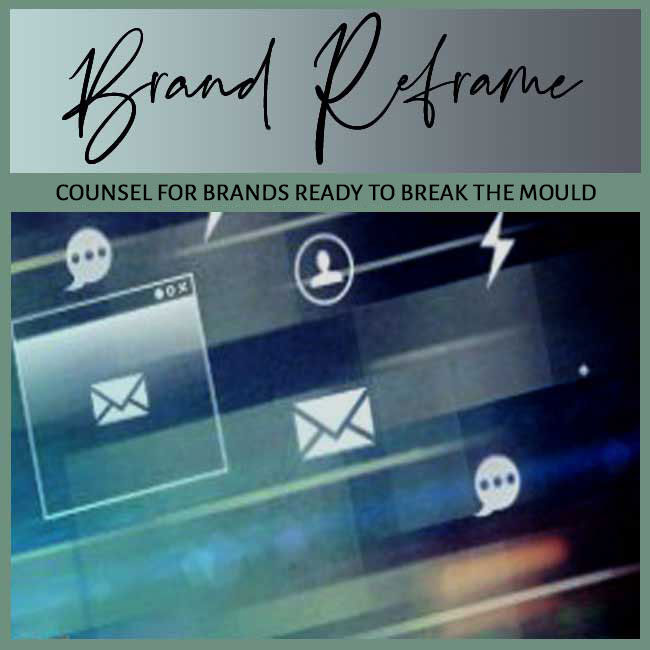
FOCUS: BRAND RELEVANCE LOSS | AUDIENCE: STEWARDS OF PLATEAUED BRANDS
BY: SHOBHA PONNAPPA | BRAND BREAKTHROUGH STRATEGIST | 45 YEARS | 125+ CLIENTS
I answer 6 tough questions about why familiar brands are increasingly invisible to younger audiences … and how to regain relevance.
Many legacy brands rely on reputation and familiarity to stay afloat. But younger audiences don’t inherit loyalty … they discover it. Without intentional engagement, even the most loved brands of yesteryears can slip beneath the radar. Familiarity without relevance is a recipe for stagnation. In this post, I answer six questions that surface when brands lose connection with emerging generations.
Younger consumers don’t grow up in the same media ecosystems. They’re not watching prime-time TV ads or flipping through magazines. They’re forming relationships with brands through TikTok, YouTube, and real-time culture. If your brand isn’t visible where they live digitally, you simply don’t exist. It’s not rejection … it’s absence.
There’s also a shift in expectations. While older generations may value reliability, younger ones crave resonance. They align with purpose, identity, and tone. A familiar brand that speaks in yesterday’s voice feels disconnected. The issue isn’t your product’s utility … it’s your cultural relevance.
Nostalgia is powerful … but it can also trap a brand in amber. While it may draw short-term sentiment, it doesn’t build long-term adoption. Younger audiences enjoy vintage vibes … but only when reframed through a lens that fits their world.
Brands that survive transitions do more than reminisce. They reinterpret their story. They spotlight heritage as a foundation, not a fossil. If your entire positioning is backward-looking, younger buyers may perceive you as outdated rather than timeless.
Start with your engagement metrics. Are your social posts being shared or ignored? Is your web traffic from younger cohorts declining? Are your brand mentions static or dropping in peer conversations? Lack of outrage isn’t safety … it’s silence. The most dangerous outcome is indifference.
Also observe tone mismatch. If younger users comment that your visuals feel stiff, or that your campaigns don’t speak their language, don’t dismiss it. A disconnect in aesthetic is often a deeper signal of brand misalignment.
The answer lies in refining, not replacing. Your brand’s essence should stay rooted in what made it valuable … but the surface expression must evolve. Voice, visuals, and channels must speak today’s dialect, not yesterday’s accent.
One technique I use is to isolate the enduring emotional value. Is your brand about comfort, trust, mastery? Once that’s clear, we can ask: how does this value manifest in the language of the now? Evolution happens when brands translate their soul into new idioms.
Not necessarily. A sub-brand can dilute rather than sharpen your presence. And influencer tie-ups only work when there’s authentic synergy. You can’t bolt on coolness … it has to be earned.
Instead, audit your brand from the lens of emerging culture. Are there product features, stories, or legacy truths that map naturally to youth interests? If so, centre those. Relevance comes from alignment, not attachment.
Think of brands like Levi’s, National Geographic, or LEGO. They didn’t abandon their core … they reinterpreted it. Levi’s leaned into sustainability and gender fluidity. National Geographic doubled down on immersive storytelling. LEGO tapped into adult creativity and nostalgia via collaborations.
These brands stayed relevant by staying responsive. They listened to generational shifts and responded with strategic creativity. That’s the difference between a legacy and a relic.
If these questions feel uncomfortably familiar, your brand might be trusted but invisible. That’s a dangerous comfort zone. You don’t need to erase your legacy … you need to reframe it. Younger audiences aren’t unreachable … they’re just waiting to be spoken to in a voice that respects the present.
If you’re an investor seeking momentum for your portfolio brands, this FAQ Insight Post I wrote could interest you: “FAQs: Why Paid Ads Work Like a Tap … and Not a Pipeline.“
And if you’re a solo expert looking to sharpen traction, this FAQ Insight Post I worked on may resonate: “FAQs: When Your Work Gets Referenced, but Your Name Is Left Out.“

"One BIG IDEA can turn brand stagnation into unstoppable movement. Spots are limited each week ... book your breakthrough session now."
Shobha Ponnappa
More Breakthrough Ideas … Case Studies & FAQs … from the Brand Relevance Loss Category
Case Studies
FAQ Insights
Smart insights, real-world frameworks, and idea-driven clarity – designed to help brands move.
Get my fortnightly Brand Reframe newsletter. Smart insights, distilled thinking, and focused momentum to help your brand lead.

Get my free AI strategy guide. Smart prompts, sharper briefs, and practical ways to make AI support your brand momentum.

Just fill in the form to join. Get my newsletter and the guide shown alongside, all with several game-changing tips.